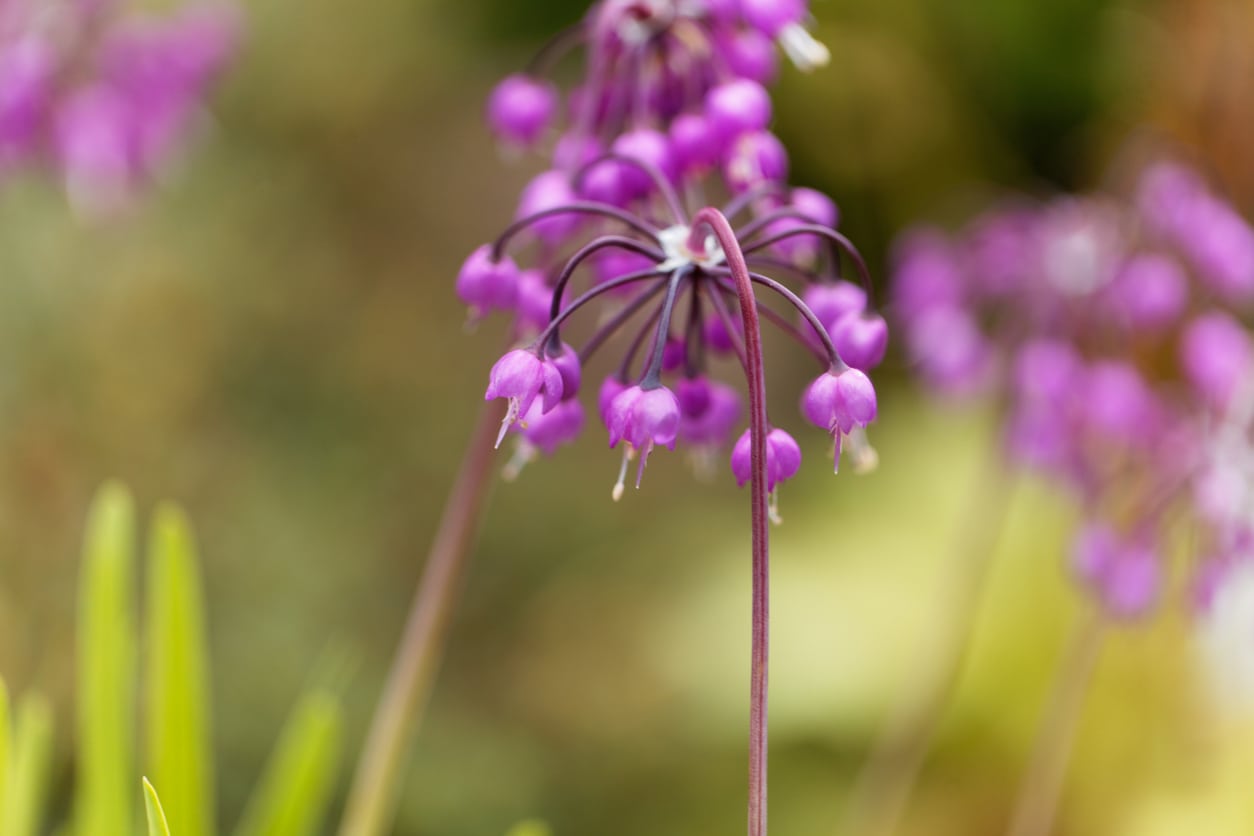Nodding Pink Onions – How To Grow Nodding Onions In Your Garden

If you love wildflowers, try growing a nodding pink onion. What’s a nodding pink onion? Well, its descriptive name gives more than just a hint but read on to learn how to grow nodding onions and about nodding onion care.
What is a Nodding Pink Onion?
Nodding pink onions (Allium cernum) are ornamental flowering onions. They are native to North America from New York state to Michigan and into British Columbia and south through the mountains and cooler areas of Arizona and North Georgia. Nodding pink onions can be found growing on rocky soils in dry meadows and prairies, the open woods, and in glades and along bluffs. They grow from 8-18 inches (20-46 cm.) in height in grass-like clumps from which emerges a slim conic bulb. Each slender bulb bears a single stem (scape) with up to 30 light pink to lavender flowers. The blossoms look like tiny fireworks perched atop the flower stems peeping just over the foliage. The scape droops at the top as do the small bell-shaped flowers, hence the botanical name ‘cernum,’ which means ‘nodding’ in Latin. Nodding pink onions bloom in the early to mid-summer and attract bees and butterflies. The foliage lasts through the late summer and then dies back. Over the course of time, the clump produces new offsets until an entire area can be taken over by this onion wildflower.
How to Grow Nodding Pink Onions
Nodding pink onions can be grown in USDA zones 4-8. They work well in rock gardens, borders and in cottage gardens. They are best planted in small groupings and interplanted with other perennials to disguise the fading foliage. Growing nodding pink onions is very easy and the plant naturalizes very well. It can be propagated easily from seed or bulbs can be purchased. It will thrive in well-draining soil with full sun exposure but can tolerate clay soil and difficult areas such as gravely soil.
Nodding Onion Care
As simple as nodding onions are to grow, so too is caring for them. Nodding onions will readily self-seed, so if you don’t want the plant everywhere, it is wise to deadhead the flowers before they set seed. If you want to collect the seed, wait until the seed capsules turn tan or straw in color but before they open, when the seeds are black. Store the seeds in the refrigerator, labeled and dated, for up to 3 years. Divide the plants every third year when 8-10 bulbs appear in a clump.
Sign up for the Gardening Know How newsletter today and receive a free copy of our e-book "How to Grow Delicious Tomatoes".

Amy Grant has been gardening for 30 years and writing for 15. A professional chef and caterer, Amy's area of expertise is culinary gardening.
